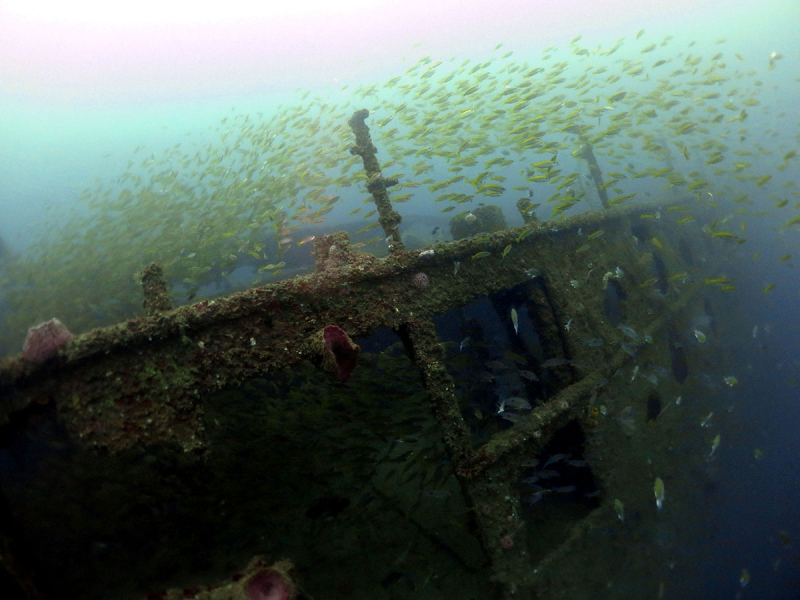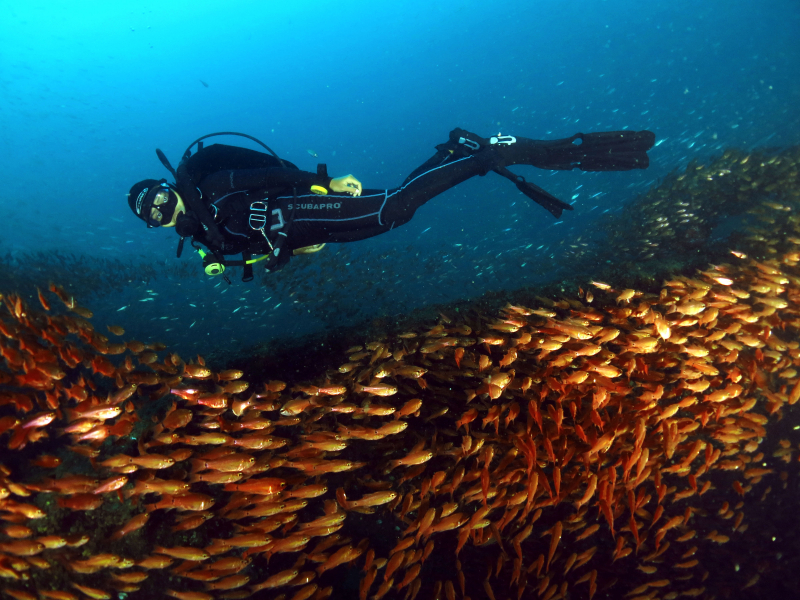Australian Wreck

This dive is best suited for experienced divers. It begins at 72 feet (22 meters), runs to a maximum depth of 111 feet (34 meters), at a 50-degree angle, and gradually sinks into the sand. The wreck is 279 feet (85 meters) long and 39 feet (12 meters) wide. The thermocline begins at 65 feet (20 meters) before you reach the wreck, where the water temperature dips to around 75 degrees Fahrenheit (24 C). With a maximum depth of 33 feet, visibility on this dive site is always slightly lower than on other dive sites in Brunei (10 m). Maximum bottom times range from 20 to 30 minutes.
The Australian wreck is surprisingly well-preserved and provides excellent penetration opportunities. Its past is very interesting. Theories suggested that the wreck was either an Australian or a Japanese ship that was sunk by an Australian torpedo. Despite the fact that both explanations were eventually proven false, the term has endured. The ship was built in 1909 as a Dutch passenger and freight ship called S.S De Klerk.
To prevent Japanese forces from taking the ship, the Dutch Navy sank it in 1942. However, the Japanese refloated the ship and renamed it the Imbari Maru. While traveling between Singapore and Manila in 1944, it struck a Japanese mine and drowned while carrying slave labor. All 339 hostages died because they were tied in the cargo holds below and couldn't escape. As a result, the ship is classified as a war grave, with visiting divers still able to observe human bones and shackles. Because it's substantially intact, you can still see the bathrooms and tiled floors gleaming white in the shadows. With such a heinous history, colder waters, and slightly lower visibility, it's no surprise that so many divers have claimed to have had otherworldly experiences and encounters.
Location: The Australian wreck is roughly a 25-minute boat ride from Muara port and about a 10-minute drive from Abana Reef.






